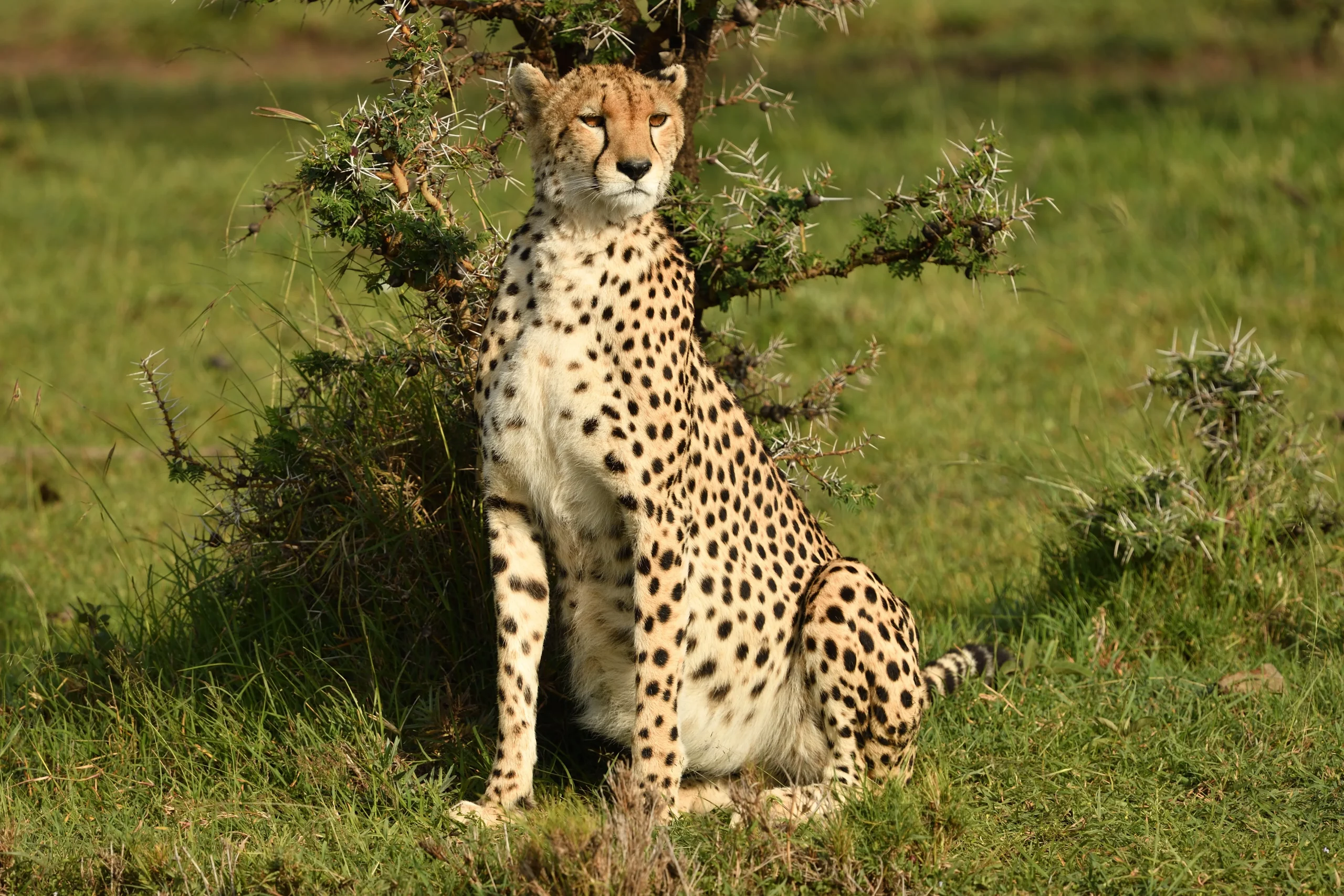
The Masai Mara Cheetahs
Among all the big cats, the cheetah is perhaps the most famous for its incredible speed. These beautiful animals are not only graceful but also have flexible spines that help them sprint. Their powerful hind legs allow them to reach speeds of up to 110 kilometers per hour (70 miles per hour). In fact, they can accelerate from 0 to 64 kilometers per hour (40 miles per hour) in just three strides! Their long tails, about 28 inches, act like rudders, enabling them to make sharp turns while chasing prey. In Kenya, you can admire these magnificent creatures during a wildlife safari in the Maasai Mara Game Reserve or in other national parks and reserves. Sadly, the number of cheetahs has declined over the years, and they are now classified as a critically endangered species by the IUCN, with only about 10,000 to 12,000 left in the wild.
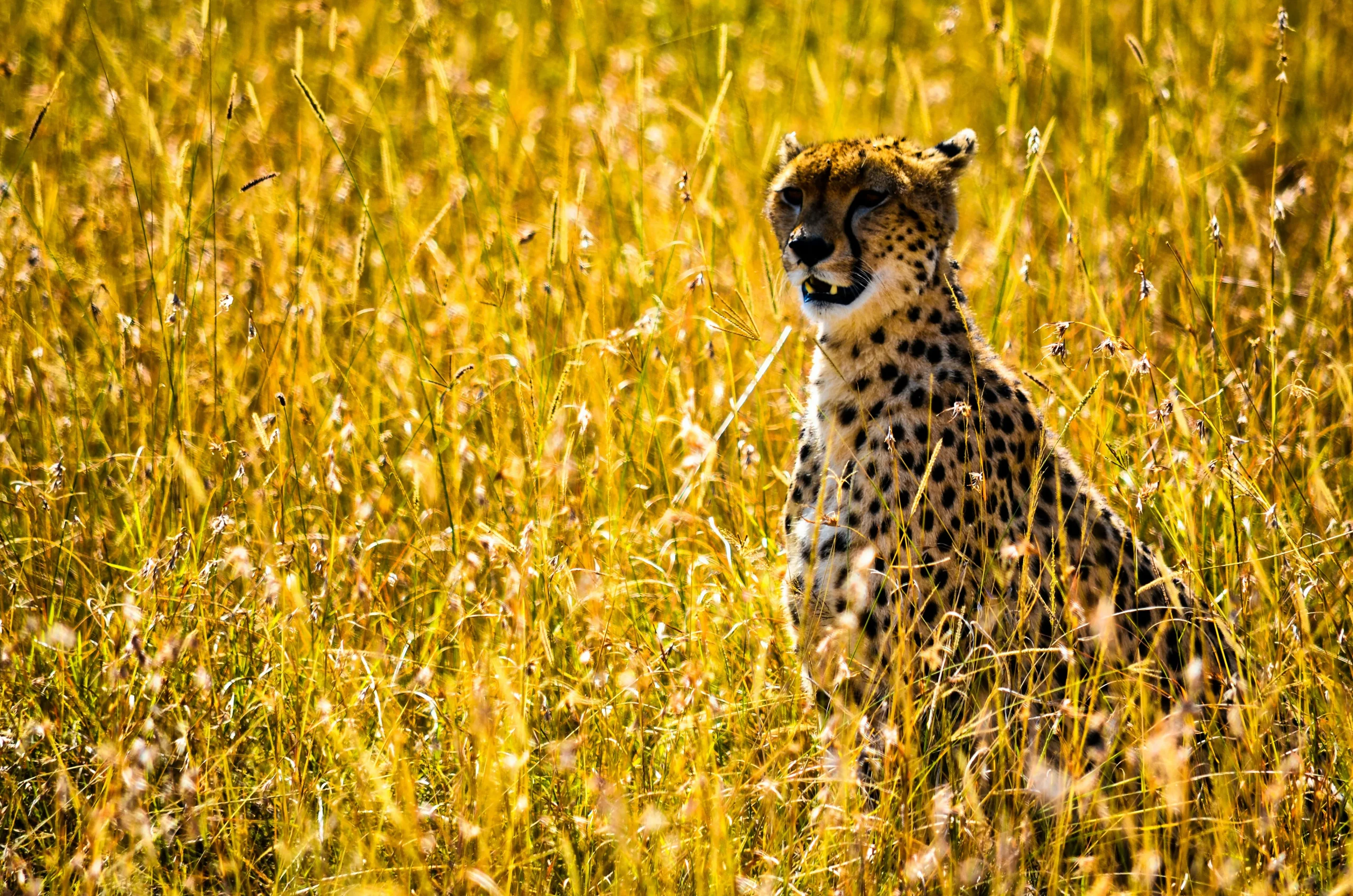
Cheetahs have a fascinating and intricate social life. Female cheetahs are usually loners, while male cheetahs tend to stick together. The females only meet the males briefly to mate, and then they raise their cubs all by themselves. When the cubs reach 18 months, the mother leaves them, and the young form a sibling group that stays together for another six months. Around the age of two, the female siblings leave to live on their own, while the young male cheetahs stay together for life in a group called a coalition. This coalition, often made up of two to three brothers, is a very close-knit group. Cheetahs mark their territory using urine, feces, and sometimes claw-raking. Unlike many other predators, cheetahs hunt during the day, mainly in the early morning and late afternoon. They usually chase small antelopes like Thomson’s gazelles and impalas, and sometimes catch the young of larger animals such as warthogs, kudu, hartebeest, oryx, roan, and sable. They also feed on game birds and small creatures like rabbits.
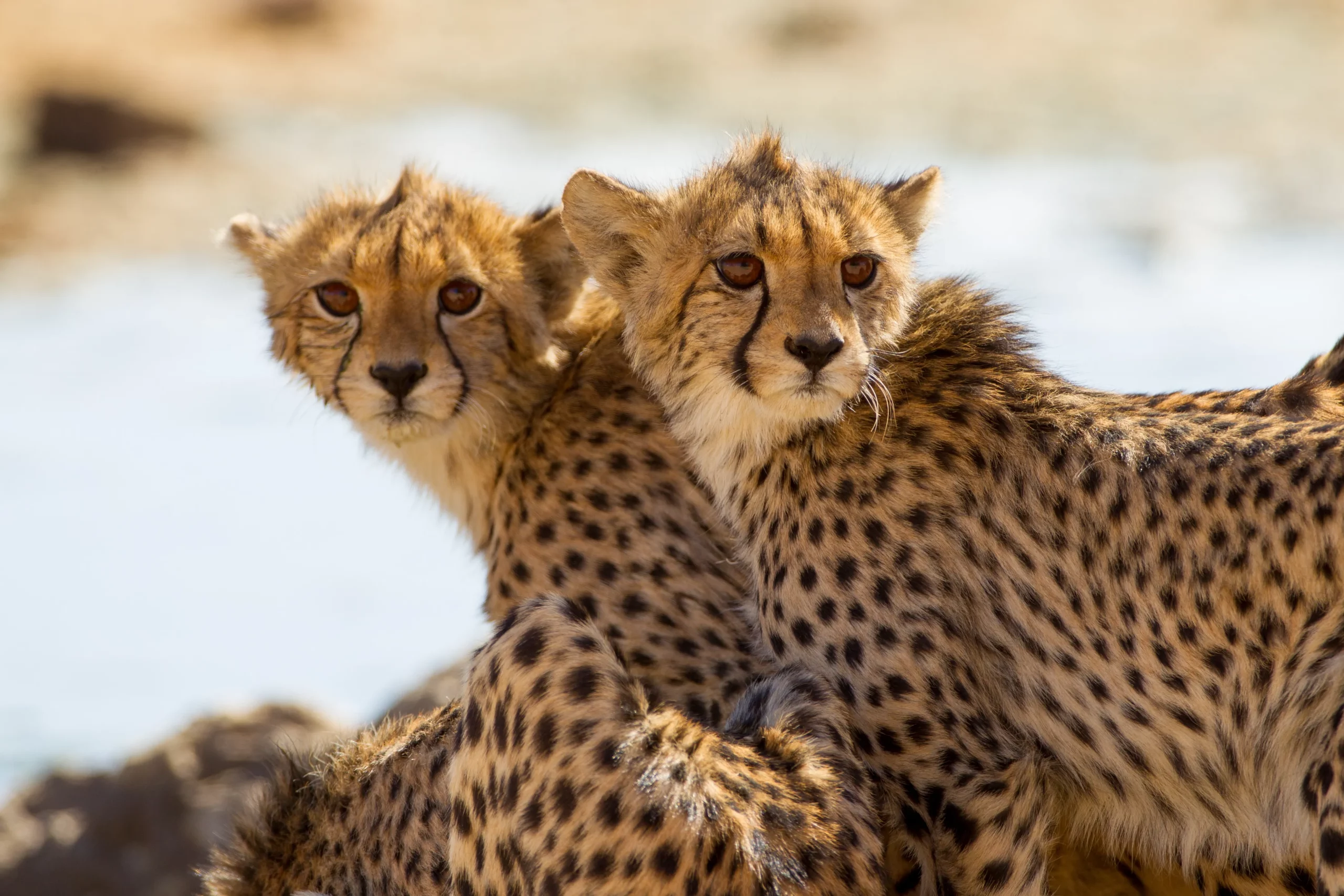
Male and female cheetahs reach sexual maturity between 18 to 23 months. The gestation period lasts about three months, with litters typically ranging from three to six cubs. While there’s no set breeding season, most births happen during the wet season. At birth, cubs weigh around 250 to 300 grams and have dark fur with a thick yellowish-gray mane along their back. This mane likely helps them blend in and stay protected from the day’s heat and night’s chill. Sadly, up to 90 percent of young cubs in the wild don’t survive, often due to other predators. By six weeks, they’re strong enough to join the hunt, and at about six months, their mother captures live prey for them to practice hunting skills. Wild cheetahs usually live 8 to 10 years, but in human care, they can live between 12 to 15 years.
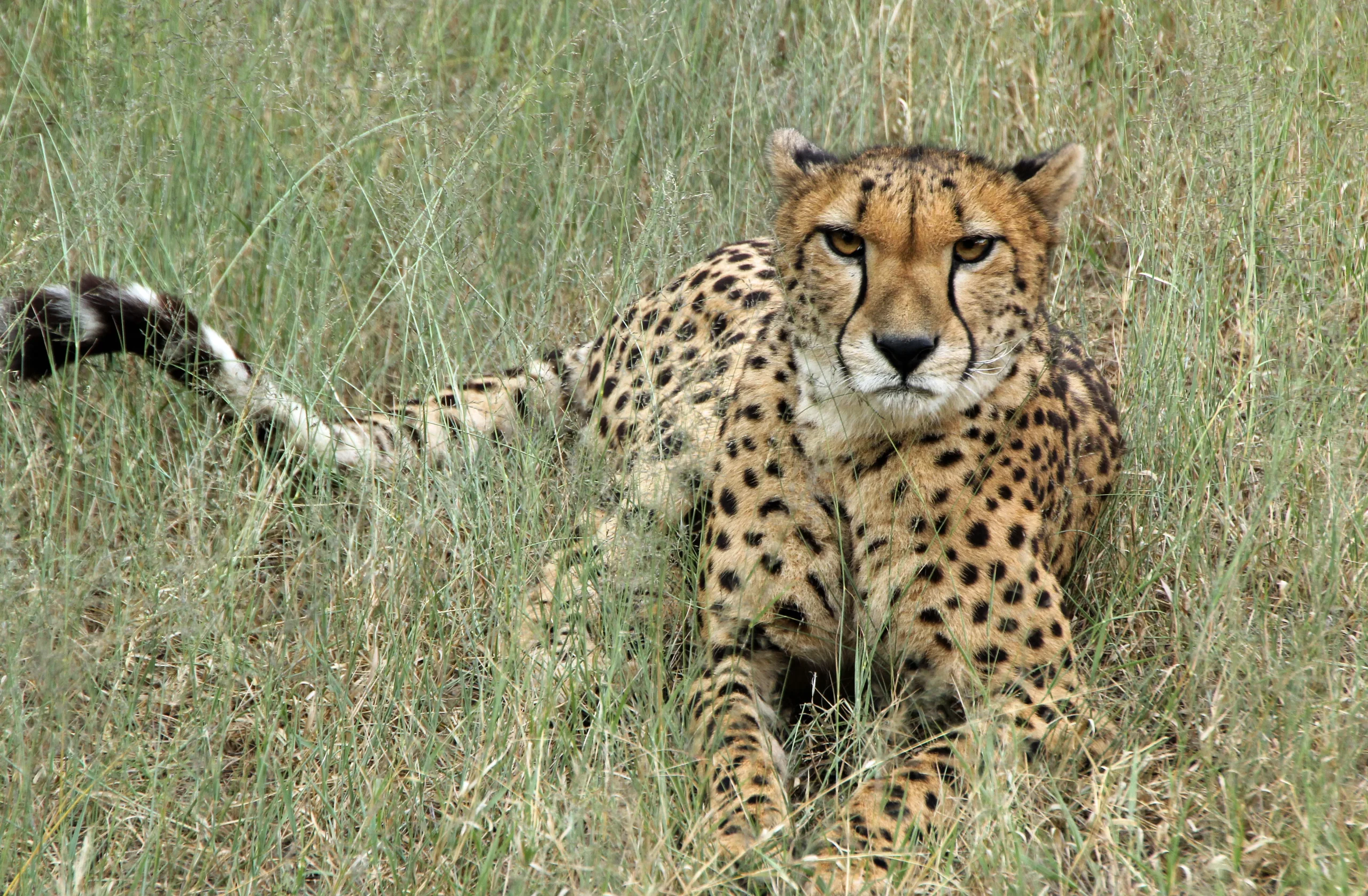
An adult cheetah is a sleek and powerful animal, weighing between 75 to 140 pounds (34 to 64 kilograms). They stand about 30 inches (77 centimeters) tall at the shoulder and measure 44 to 56 inches (112 to 142 centimeters) in length, with their tails adding another 26 to 33 inches (66 to 84 centimeters). Male cheetahs tend to be a bit bigger than female cheetahs. Although sometimes mistaken for leopards, cheetahs can be recognized by the unique black stripes on their faces. These stripes, which run down their faces and beneath their eyes, help reduce glare when they are sprinting at high speeds.
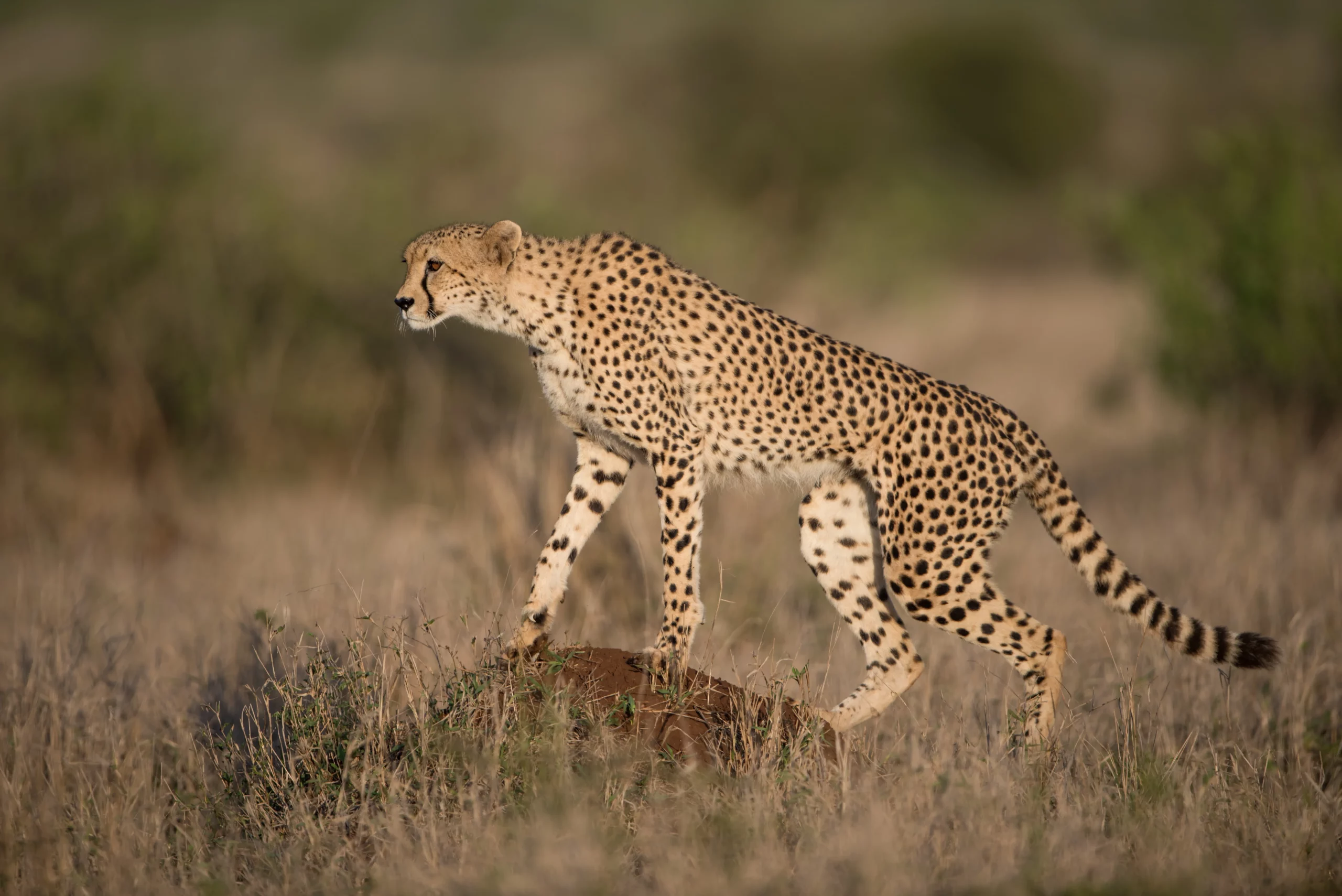
Unlike other big cats, a cheetah doesn’t roar. Instead, these beautiful animals have their own unique sounds. They purr when content, chirp to communicate with their cubs, and growl or hiss when threatened.
